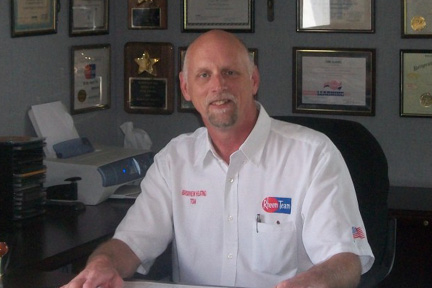Sponsored
Heating Your Home During Extreme Cold
by Tom Olecki, Owner, Broadview Heating
I feel the need to talk about the winter superstorm we experienced this past Christmas and what that storm meant to your heating system and your home’s comfort.
We received hundreds of calls from customers with no heat and with homes that would just not maintain temperature, even if the furnace seemed to be running properly.
The cause of most of the no-heat calls were determined to be the extremely high winds we experienced, which were sustained at 30+ mph with gusts in excess of 60 mph. This caused snow to drift and sometimes block the exhaust systems of furnaces that have the piping installed through the side walls of the residence. Plus, just the wind pressure on the exhaust pipes was, in most cases, more than the units were designed to sustain.
Should we see another storm like this in the future, making sure to keep the piping termination clear of snow drifts is extremely important. Also, there should be no obstructions in front of the exhaust system so the flue gasses are able to flow away from the home easily.
With regard to homes that were struggling to maintain desired indoor temperatures, this was most likely a combination of the extreme wind and the sub-zero temperatures. A properly sized furnace system is designed to maintain about 70 degrees inside when the outdoor temperature is at 0 degrees. With the wind and cold temperatures we experienced, most furnaces simply struggled to keep up during the storm. Why not install a bigger furnace that will handle temperatures up to 20 degrees below and still keep up? The fact is, on average we see temperatures at or below design for only a few hours per year. Most of the winter, temperatures are in the teens as lows and around 30s for highs. It is much more efficient and comfortable to have a properly sized furnace 99% of the year. Not only is it cheaper to run, quieter and less expensive to buy, but it will certainly last longer.
To keep your furnace running at peak output, making sure air filters are clean is key. Also, do not ever use the 1-inch pleated filters, which are very restrictive even when clean and can severely hurt the performance of your furnace. You also should have your furnace serviced at least every other year to make sure it is safe and operating as new.
Questions are always welcome. For free help with your heating/cooling system, ask the experts at broadviewheating
@sbcglobal.net or call 440-526-7310.

Sponsored by
Questions are always welcome. For free help with your heating/cooling system, ask the experts at broadviewheating@sbcglobal.net or call 440-526-7310.
Opinions and claims expressed above are those of the author and do not necessarily reflect those of ScripType Publishing.

